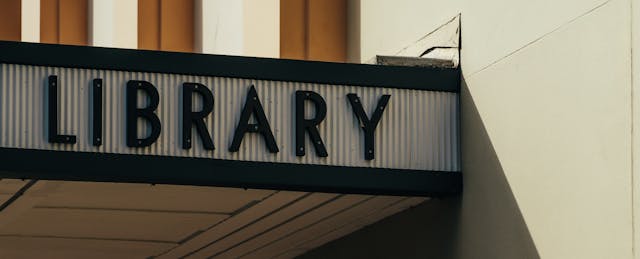In her 2018 bestseller “The Library Book,” author Susan Orlean uses the history of a fire that destroyed parts of the Los Angeles Public Library in 1986 to explore transformations that libraries and librarians have undergone over the last hundred years.
One need only walk into any reasonably sized public library where rows of books and quiet reading spaces sit alongside banks of public computers, teen rooms and meeting facilities hosting daily community events to see the physical manifestation of this transformation. Even more significantly, the job of the librarian has changed from curator of books and periodicals to broad-based information specialist.
Like teaching, librarianship is a majority-female profession (83 percent of librarians are women compared to 76 percent of public-school teachers) that performs a public good with limited resources. Yet libraries seem to have undergone far more substantive improvement over the last century than public schools.
Increased investment cannot explain this gap, given that libraries tend to receive a fraction of the public funds communities pour into their school systems, and that local, state and federal funding for libraries has fluctuated dramatically during an era of steady expansion of the library’s missions. But if the ability to reform is not directly proportional to the amount of resources and attention paid to an institution, might it be inversely proportional to it?
In most cases, lack of resources is considered a liability. Yet with limited budgets, librarians have been forced to leverage their own talents and networks to navigate a changing world. For example, as the internet emerged as the place where most people search for information, librarians embraced this change, rather than hide in the book stacks shouting “stop” at the future.
The field of information literacy that emerged from schools of library science was built on expertise developed over decades of managing increasingly complex information sources (such as microforms and online databases), turning librarians into go-to experts who could help the public navigate between the high-quality data sources and low-quality bunk that populates today’s information ecosystem.
In parallel with this changing nature of librarians, the library itself took on an increased role in the community, offering spaces where the unemployed receive job training, the needy access social services and families gather for daily programming. While all of these changes were underway, librarians continued to fulfill their responsibilities as collectors of books and periodicals (supplemented today by e-books, media, special collections and research databases).
In fairness, the much-larger budget of a school system is spent supporting a bigger and more complex enterprise than even the most lavish public library. In addition to educating every interested or eligible student five days a week for over a dozen years, schools also offer a broad range of athletic and extracurricular activities, as well as support for students and families with diverse needs. And successful education of students cannot be measured by circulation numbers or time and dollars spent on each person entering the building.
Yet part of this complexity originates from local, state and federal laws, regulations and mandates that must be managed by teams of administrators and specialists. Many of these mandates support vital missions, notably the need to support all students—including those with disabilities and other challenges. Other initiatives, however, have come from top-down reform efforts, such as the creation and implementation of academic standards and associated testing regimes that emerged from the accountability movement. While teachers have risen to the challenge of meeting new requirements, just as they rose to challenges implementing other shifts in educational priority over the last century, decisions over which policy choices need implementation are still largely made by people removed (sometimes far removed) from the classroom.
Within the classroom, teachers still maintain enough autonomy to tailor curriculum (now standards-based curriculum) to the needs of students while developing their own teaching style. They often can also choose the speed at which they embrace the next set of reforms (which can slow progress, but also acts as a brake on educational fads).
The balancing of legal, bureaucratic, and pedagogical needs within school systems has not prevented schools from making progress, albeit highly unevenly. But compare the overall pace of successful reform of the nation’s multi-tiered educational system with that of the nation’s libraries where practitioners (i.e., librarians) are the ones who decide where they want to go and live with those choices.
As mentioned, education is an extremely complex affair requiring more than just skilled classroom teachers to succeed. But if the history of libraries is any guide, perhaps the next round of reform efforts (especially those initiated by people with limited experience inside a school building) should involve getting out of educators’ way, rather than telling them what to do next.


